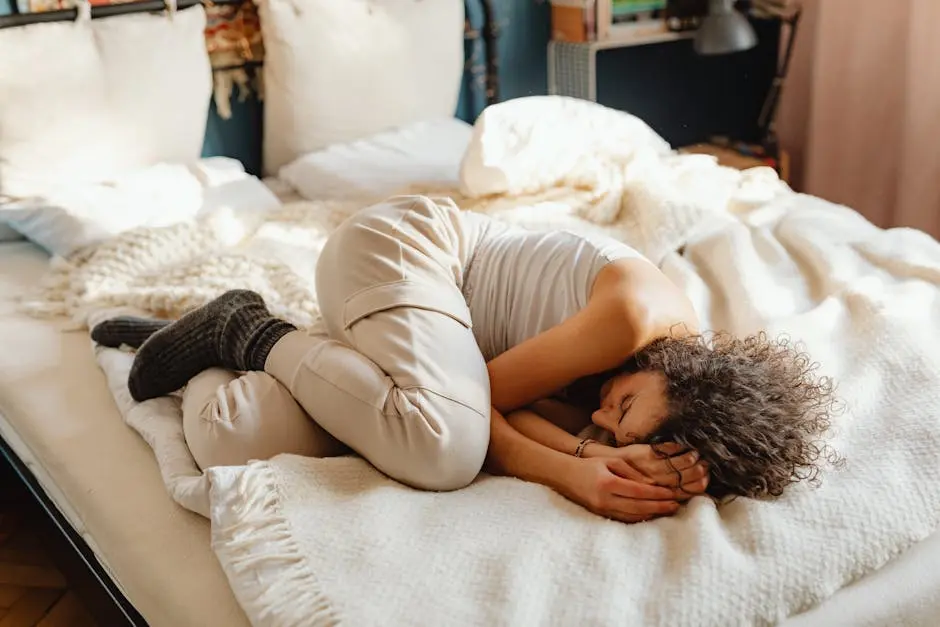
Can Sleeping Positions Impact Back Tension Relief?
Share
If you’ve ever woken up with an aching back, you might be wondering if your sleeping position is to blame. It’s a common question, and understanding the connection between how you sleep and your back tension can be the first step toward more restful nights. Let’s explore how your sleeping position might affect back tension relief.
Understanding the Connection Between Sleep and Back Tension
Our sleeping positions can either alleviate or exacerbate back tension. An ideal position promotes healthy spine alignment, reducing pressure and tension.
The way we position ourselves through the night isn’t just about comfort—it’s pivotal in determining how we feel in the morning. Proper alignment can prevent unnecessary straining of muscles and ligaments, which over time, might lead to persistent back issues. Engaging in the right posture during sleep is akin to maintaining good posture during the day. Both are integral to spinal health and can contribute significantly to back tension relief.
Research suggests that poor sleep posture might even impede the body’s natural ability to rejuvenate, impacting our overall health. Sleep is the time for the body to heal and repair, and doing so in a supportive position can be crucial for chronic pain sufferers. By optimizing our sleeping position, we ensure that we’re not adding extra stress to our already hardworking spines.
Best Sleeping Positions for Back Tension Relief
Certain sleeping positions, like sleeping on your back with a pillow under your knees, or on your side with a pillow between your knees, can help maintain the natural curve of your spine, potentially reducing back tension.
The back-sleeping position, when paired with supportive cushioning, could distribute weight more evenly across the body and minimize stress on the lumbar region. Placing a pillow beneath the knees can enhance this effect by promoting the spine’s natural curve. This is especially beneficial for those who suffer from lower back pain frequently.
Sleeping on your side with a pillow between your knees not only ensures that your hips are aligned, but it also prevents your spine from rotating during the night. This position can be particularly effective for pregnant women or individuals experiencing hip pain as it aids in maintaining proper spinal alignment and reduces pressure on the lower back.
Remember, the key is to find a balance that allows your spine to rest in a natural position, reducing the likelihood of muscle strains or other injuries. Some individuals find comfort in the fetal position as it mimics the body’s natural curve, helping to relax the surrounding muscles.
Common Problematic Sleeping Positions
Sleeping on your stomach can flatten the spine’s natural curve, causing strain and discomfort. It may be beneficial to try different positions for better support.
The stomach-sleeping position, although favored by some, is often criticized for its contribution to spinal misalignment. It forces the neck into an unnatural twisted position and increases pressure on the abdomen. This can result in prolonged discomfort and strain over time.
While every person is different, those experiencing persistent neck and back pain may want to avoid stomach-sleeping if possible. Transitioning slowly to a side or back-sleeping position could alleviate some of the pain associated with this posture.
Tips for Adjusting Your Sleeping Position
Changing sleeping positions can be challenging, but using supportive pillows and a comfortable mattress can aid in the transition and promote better spine alignment.
Start small by incorporating new habits like placing pillows strategically to support your back or knees. You may find that an orthopedic pillow offers better support than traditional options. The right pillow can help maintain natural curves and positions, easing the transition gradually.
Be patient. It might take several nights, or even weeks, to find comfort in a new position. Remember to focus on consistency and adjust your bedding as your body becomes accustomed to the new alignment. Quality sleep products specially designed for support can be pivotal during this adjustment phase.
A comfortable mattress that adapts to your sleeping style is also crucial. Opt for a mattress that offers both support and cushioning. Investing in the right bedding materials can drastically improve sleep quality and contribute to long-term spinal health.
When to Seek Professional Advice
If back tension persists despite adjusting your sleeping position, consider consulting a healthcare professional to explore other potential causes and solutions.
Persistent pain shouldn’t be ignored. Healthcare professionals can provide tailored advice that considers your personal circumstances and health history. They might suggest therapeutic interventions, specific exercises, or refer you to a specialist for further investigation.
In many cases, a chiropractor can offer valuable insight and treatments that help manage chronic back and neck pain, improving overall comfort during sleep. If you’re unsure of your next step, scheduling an appointment can provide clarity and guidance towards a sustainable solution.
Finding the Best Sleeping Position for Back Tension Relief
Your sleeping position can significantly impact back tension and overall comfort. By taking the time to find the best position that supports your spine’s natural curve, you may experience considerable relief. However, remember that every individual is unique, and what works best can vary, so it’s important to listen to your body.

